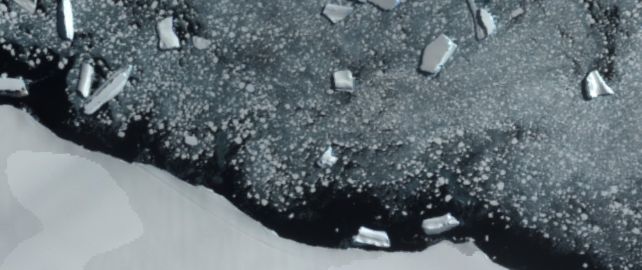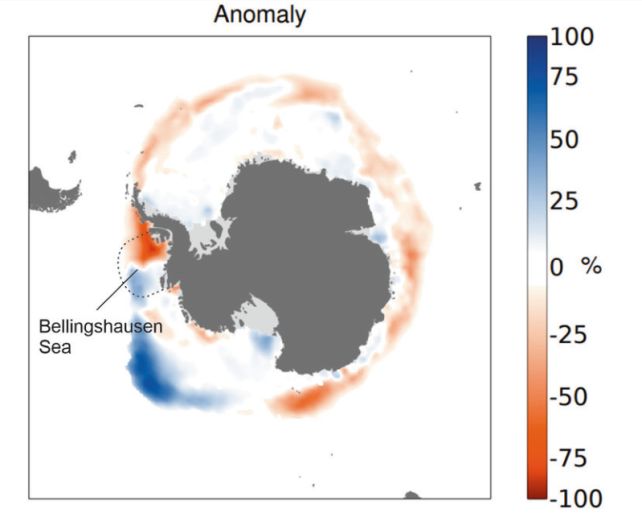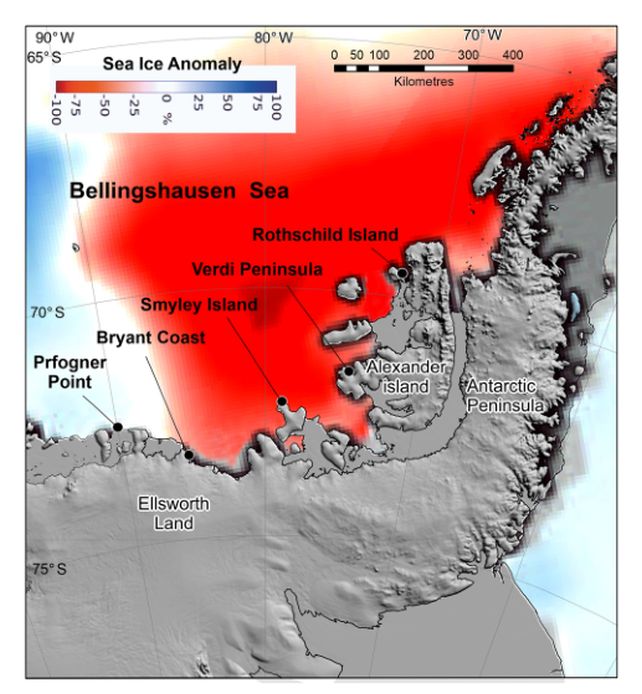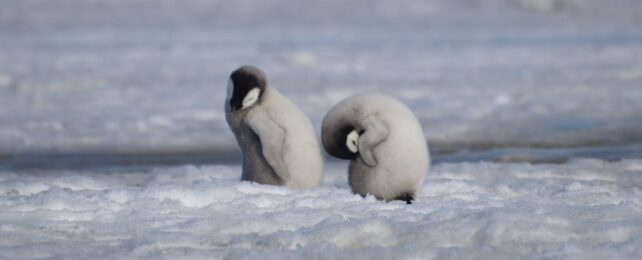Sea ice loss in Antarctica during 2022's emperor penguin breeding season resulted in the complete failure of four out of the five breeding colonies in the Bellingshausen Sea.
Satellite imagery shows none of the chicks from those sites survived.
The devastating event is the first recorded widespread breeding failure of emperor penguins (Aptenodytes forsteri); but, if the loss of ice due to climate change continues, scientists warn, it won't be the last.
"We have never seen emperor penguins fail to breed, at this scale, in a single season. The loss of sea ice in this region during the Antarctic summer made it very unlikely that displaced chicks would survive," says cartographer Peter Fretwell of the British Antarctic Survey.
"We know that emperor penguins are highly vulnerable in a warming climate – and current scientific evidence suggests that extreme sea ice loss events like this will become more frequent and widespread."

For most of the year, there is a "skirt" of stable sea ice around Antarctica, attached to the land. This fast ice, as it is known, forms in April, during the Southern Hemisphere's autumn, and persists until January, or high summer.
Emperor penguins make their breeding ground on this fast ice, laying their eggs in May and June.
The incubation period for emperor penguins is around 65 days, but the chicks are pretty helpless until they fledge – that is, they grow out of their baby fluff into suitable plumage for swimming and diving in the gelid Antarctic waters. This usually happens between December and January.
The breeding season of 2022 started off normally; the penguins laid their eggs in the autumn, and incubated and hatched them into the winter.

Come spring, disaster struck. The fast ice retreated and broke up early. By the beginning of summer, the extent of the Antarctic sea ice was consistent with the all-time low recorded the previous year, in summer 2021.
The region most impacted was the Bellingshausen Sea, towards the west of the Antarctic peninsula, where some regions saw a 100 percent loss in sea ice extent.
Every year, emperor penguins return to the same five sites in the Bellingshausen Sea to lay their eggs and raise their chicks. These five colonies range in size from an average of around 650 breeding pairs to 3,500 breeding pairs.
By December 2022, four of those five sites disappeared as the ice on which they relied melted into the waves. At only one site, Rothschild Island, with 650 breeding pairs, did chicks manage to fledge successfully. Fretwell and his team found no sign of the rest of the babies.

Emperor penguin colonies can be found around the entire perimeter of the Antarctic continent, but the breeding failure of these select few in the Bellingshausen Sea represent the first of what is likely to be many.
Even now, the Antarctic sea ice is at its lowest extent for this time of year on record. If these trends persist, scientists say, over 90 percent of emperor penguin colonies will be destined for certain extinction by the end of the 21st century.
"This paper dramatically reveals the connection between sea ice loss and ecosystem annihilation. Climate change is melting sea ice at an alarming rate. It is likely to be absent from the Arctic in the 2030s – and in the Antarctic, the four lowest sea ice extents recorded have been since 2016," says physicist Jeremy Wilkinson of the British Antarctic Survey.
"It is another warning sign for humanity that we cannot continue down this path, politicians must act to minimize the impact of climate change. There is no time left."
The research has been published in Communications Earth & Environment.
